A member of Parliament (MP) is elected to represent a single district, or “riding,” in the House of Commons. MPs have three main duties: passing laws and crafting policies in Parliament, representing their riding and political party, and serving the people in their riding. MPs have different roles and levels of influence. They can be backbenchers, Cabinet ministers, opposition critics or the prime minister. They typically serve four-year terms. They hold office until Parliament is dissolved. They have no term limits and can be re-elected any number of times. The number of MPs changes every 10 years. There are currently 338 MPs.
This article is a plain-language summary of member of Parliament (MP). If you are interested in reading about this topic in more depth, please see our full-length entry: Member of Parliament (MP).
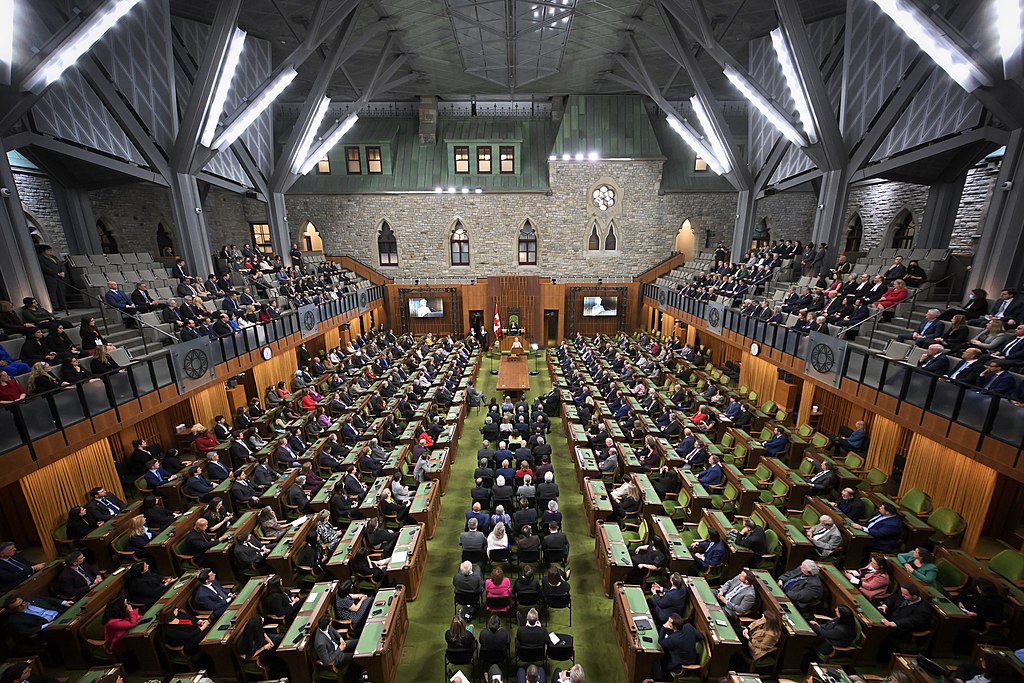
What do Members of Parliament Do?
As elected representatives, MPs propose, debate and vote on laws. They speak on important matters in the House of Commons. They ask questions of the prime minister and Cabinet during Question Period. They work behind the scenes in committees and consult with their party, or “caucus.” They review government spending and vote on budgets. They also respond to the needs of people in their riding, where they maintain an office. MPs who serve in Cabinet handle policy-making, with the help of the public service.
Roles in the House of Commons
MPs have different roles and levels of influence. They can hold various positions. These include speaker, house leader, party whip, committee chair, Cabinet minister or opposition critic. MPs are paid public servants. Their annual salary, as of March 2023, starts at $189,500. Those with extra duties (such as prime minister or Cabinet minister) earn higher salaries. MPs also get perks such as a car allowance. Housing is provided to both the prime minister (24 Sussex Drive) and the leader of the Opposition (Stornoway).
Prime Minister
The prime minister is the head of the federal government. He or she is also an elected member of Parliament. In the party system, the leader of the party with the most support in the House of Commons becomes prime minister. Party leaders can be prime minister even if they are not an MP. For example, John Turner spent most of his term as prime minister outside the House. But convention would urge them to seek a seat in a general election or a by-election.
The prime minister sets policy direction and manages the government. They direct and appoint Cabinet. They meet with foreign delegations. They also answers questions when Parliament is in session. To govern, the prime minister and Cabinet must maintain the support (confidence) of a majority of MPs.
Cabinet Ministers
Cabinet is the committee of ministers that holds executive power. That is, the power to execute, or carry out, the government’s plans. MPs are appointed as Cabinet ministers. They are typically from the party with the most seats in the House. They can also be from the Senate or the private sector. Ministers act as head of one or more department. Those departments include safety, health, defence, Indigenous and northern affairs, natural resources, foreign affairs, justice, and finance, among others. Ministers set priorities. They draft public policy, serve on committees and propose legislation.
Opposition Critics
Opposition parties in the House form “shadow cabinets.” These mirror Cabinet. Shadow ministers (also called opposition critics) hold the government to account. They criticize Cabinet and offer policy ideas. They also convey their party’s stance and message.
Backbenchers
Members who are not in Cabinet are known as backbenchers. (This is because they historically sat on benches in the back of Parliament.) The main work for all backbenchers is to serve the people in their riding. They are also involved in policy-making with their party caucus.
Representation
The number of seats in the House of Commons changes regularly. In 1867, there were 181 seats. There are now 338. The seats are assigned equitably among the provinces and territories. This is done through a process known as redistribution. It occurs every 10 years, after a census in a year ending in “1.” The 2021 election was the last to take place with the current number of seats. A new distribution of seats — with a total of 343 — will be in effect for the next election.

Elected Members of Parliament
Any Canadian citizen who is at least 18 years old on election day can run for office. Virtually all MPs are elected as part of a political party. A few campaign and sit as independents.
MPs tend to have a high level of education. After the 2015 election, 227 MPs had bachelor’s degrees, 97 had master’s degrees and 14 had PhDs. Many have also served in provincial, territorial or municipal government. Many others came to politics from the private sector. Common professions include careers in business, law, teaching and journalism.
Following the 2021 election, 70 per cent of MPs were men. Thirty per cent were women — a record high. Most MPs were also middle-aged (in their 40s and 50s).
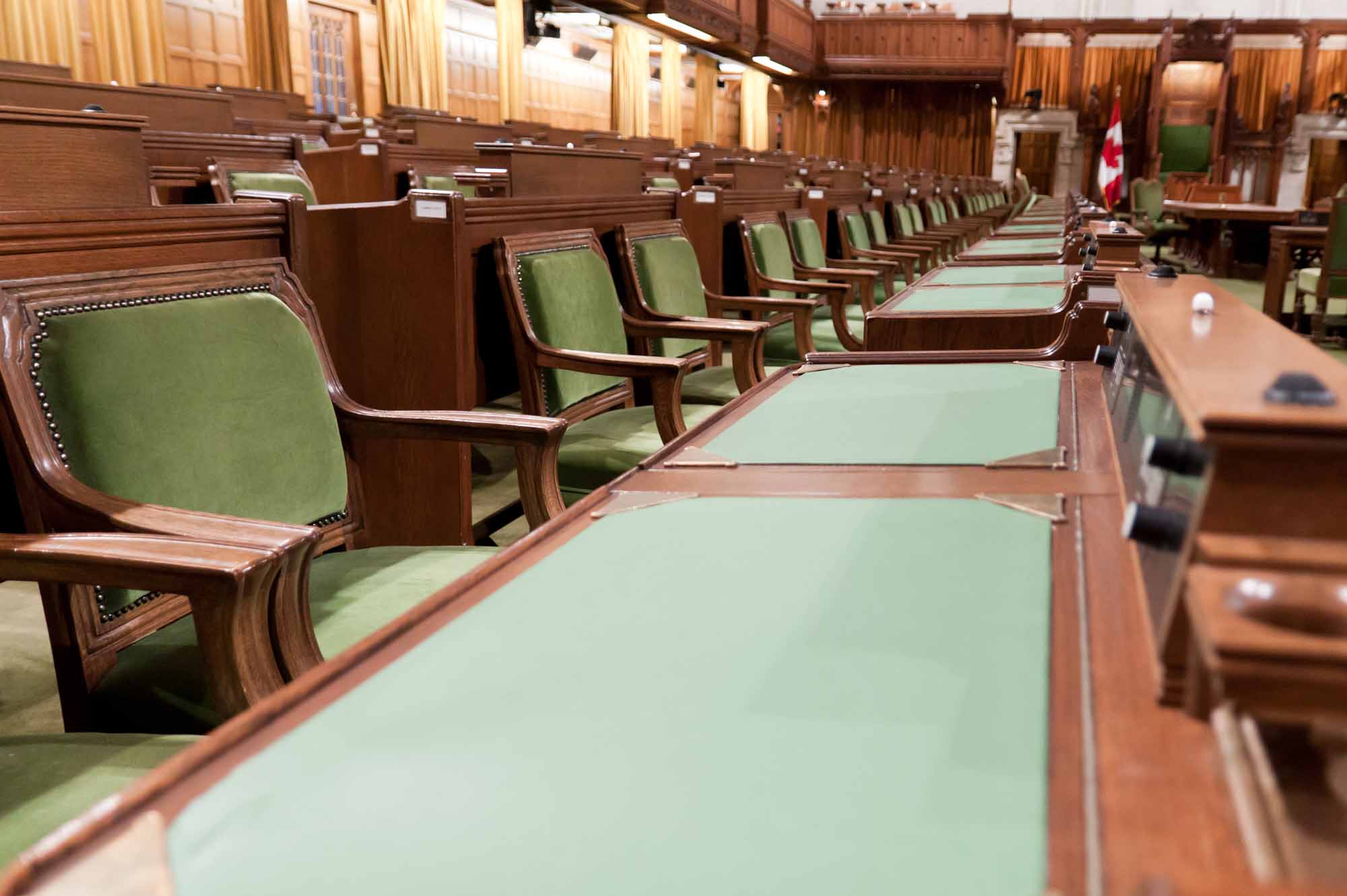
Diversity in the House of Commons
In 2015, 54 Indigenous candidates ran in the federal election. A record 10 Indigenous MPs were elected. This was up from seven in 2011. In the 2019 federal election, 62 Indigenous candidates ran for office. Ten were elected. In the 2021 election, a record high 77 Indigenous candidates ran for office. As in 2019, 10 were elected.
In 2015, visible minority groups made up 12.9 per cent of all candidates from the six main parties. (See Liberal Party of Canada, Conservative Party of Canada, New Democratic Party, Bloc Québécois, Green Party of Canada, People’s Party of Canada.) In 2019, that proportion went up to 15.7 per cent. The total number of visible minority MPs who were elected increased from 47 (13.9 per cent) in 2015, to 51 (15.1 per cent) in 2019, and to 53 (15.7 per cent) in 2021.
The number of women who ran in federal elections increased from 533 in 2015 to 597 in 2019. In 2019, 98 women were elected. This was 10 more than in the 2015 election. In 2019, 830 men ran as candidates and 240 were elected. At least 87 candidates from the LGBTQ+ community ran in the 2019 election. Four were elected.
See also Parliament; Canadian Party System; Canadian Electoral System; Prime Minister of Canada; Cabinet; Opposition Party; Leader of the Opposition.

 Share on Facebook
Share on Facebook Share on X
Share on X Share by Email
Share by Email Share on Google Classroom
Share on Google Classroom

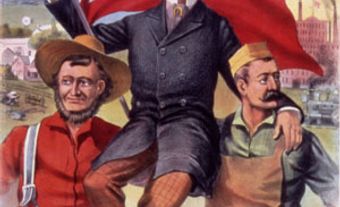
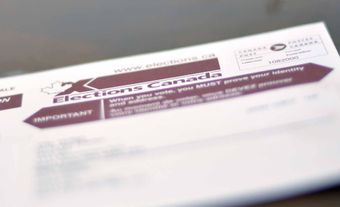

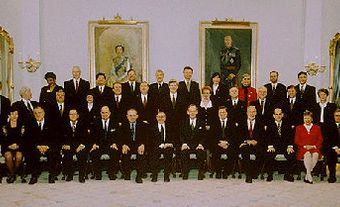
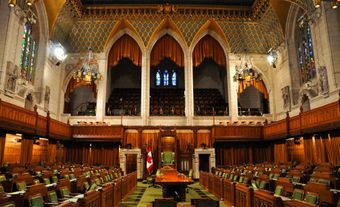
.jpg)
